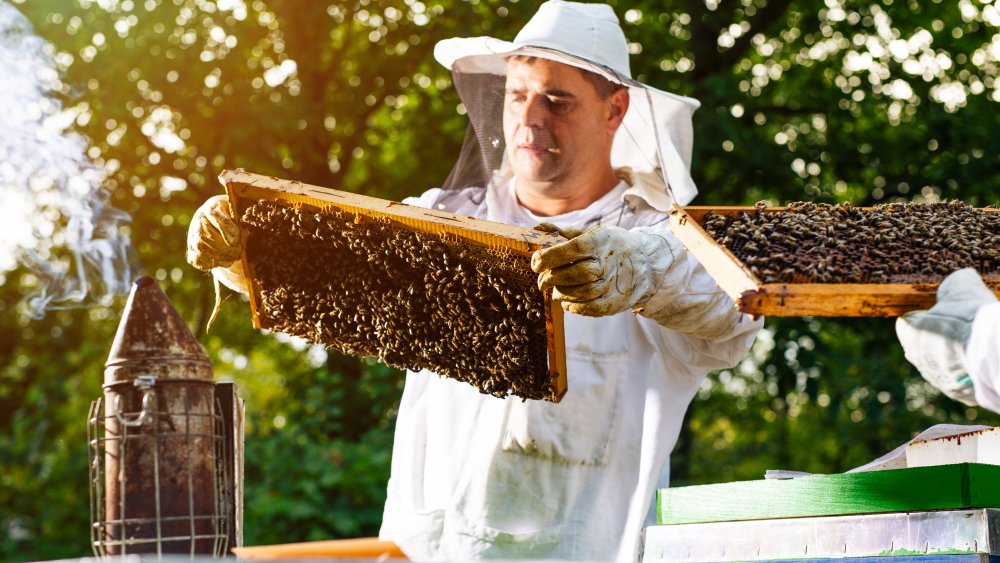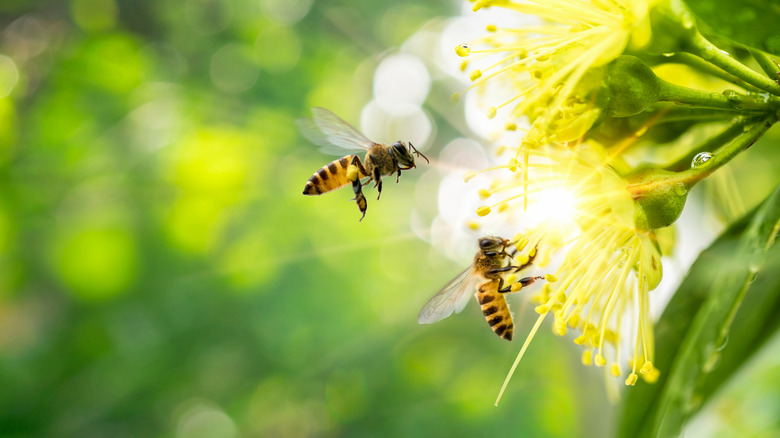
Everything We Know About The Windshield Phenomenon
Remember your childhood days with swarms of bugs all around? Butterflies, fireflies, ladybirds … Well, scientists believe those days are long gone and we’re slowly experiencing a sort of insect apocalypse. But because pesky insects like flies and mosquitoes are still around, many people are not aware of the decline of the “nicer” insects.
Though not all insects are getting the same attention, there’s been a lot of talk about the decline in bee populations in recent years. A 2020 study showed that the decline in pollinators like honeybees and wild bees is so severe that it’s now affecting crop fields across the US and might lead to global food security issues (via Science Daily).
In addition to affecting us, a reduction in the population of pollinators will impact the whole ecosystem. Without bees, a lot of wild crops and plants will not produce fruit, which will then reduce the food available for birds and other animals up the food chain. According to Environment America, beekeepers are now losing 29-40% of their honeybee colonies every year. This is twice the upper limit of what’s considered financially acceptable and much more than the average of just a few years ago.
This obvious decline in the population of some insects has made scientists take a closer look at insects in general. Along the way, the theory of the Windshield Phenomenon was born.
The Windshield Phenomenon has been studied around the world
Simply put, this is the observation that when you’re driving, you’ll notice that not as many dead insects will accumulate on your windshield as they used to years ago.
This doesn’t sound very scientific, but the Windshield Phenomenom actually gained traction after a 2017 large-scale study in Germany. According to the study, the presence of insects in German forests and grasslands dropped 78% between 2008 and 2017. Some species couldn’t be found at all after a few years — this accounted for an astonishing 34% fewer insect species in the areas researched (via Tree Hugger).
As scientist Wolfgang Wägele, Director of the Leibniz Institute for Animal Biodiversity, told Science Magazine, “If you talk to people, they have a gut feeling. They remember how insects used to smash on your windscreen.” Today, your windows are likely to be a lot cleaner after a long highway drive.
So scientists set up to prove the theory by creating “splatometer tests.” This was done by adding some sticky grid to the license plate of vehicles and seeing how many insects got stuck to it (per Mother Jones). A 20-year splatometer study in Denmark found an 80% decline between 1997 and 2017. A second test conducted in the UK in 2019 found a 50% reduction in impacts compared to 2004.
The conclusion? Fewer insects hitting your car means the insect population is getting smaller and smaller.
An insect apocalypse is not a good thing for anybody
To make sure fewer dead bugs on your windshield really mean fewer bugs in general, researchers also compared old and new cars. The results? Modern cars actually caught more bugs because of their aerodynamic design, according to Tree Hugger.
So what’s causing the insect apocalypse? The long answer is that it’s likely a mix of several factors, including habitat loss, pesticides, and climate change, according to Science Direct. The short answer? It’s us, we are causing it. And unless we do something about it soon, entire ecosystems will be in trouble.
For example, in addition to being important as pollinators, insects are also a basic part of the food chain, feeding birds, lizards, and many other animals. In Britain, farmland birds have declined by more than 50% because of a lack of insects to feed on, and at least one bird species (the red-backed shrike) has become extinct in the past three decades (via The Guardian).
Another example is a study conducted in Puerto Rico’s Luquillo rainforest. Here, scientists found that the decline of insects in the area (down up to 60 times since the 1970s) has resulted in declines in the population of birds, frogs and lizards that inhabit the rainforest. The reason behind the alarming insect population decline? Temperatures in the rainforest have risen extensively in the past decades — more than enough for a serious habitat disruption (as published in the PNAS Journal).

The Bizarre Book Written By The Son Of Sam

The Truth About Deborah The Judge In The Bible

Here's How Many Victims The Russian Werewolf Actually Had

The Untold Truth Of Claudine Longet

The Sad Death Of John DeLorean

32% Of People Think This Band Would Give The Worst Prom Performance

This Was The Part Of Fame Dolores O'Riordan Didn't Like

Why Josh Klinghoffer Left The Red Hot Chili Peppers

Strange Things People Used To Believe About Smoking Cigarettes

Arizona Man Registers Swarm Of Bees As Emotional Support Animals

























